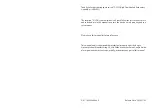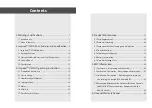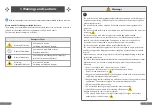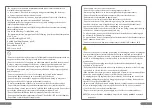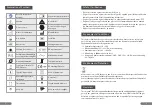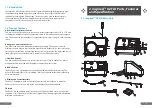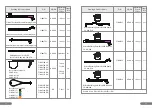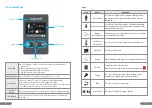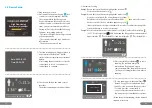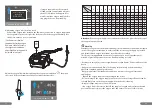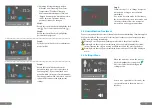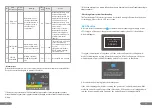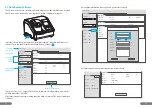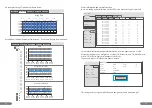
•
Do not apply excessive force to the device.
•
Do not drop or subject the device to strong impacts or shocks.
•
Avoid exposing the device to direct sunlight and/or high temperatures.
•
Do not allow children or infants to tamper with or operate the device.
•
Do not immerse the machine in liquid/water.
•
Do not use corrosive solvents to clean the surface of the device.
•
Do not use the device if it is not working properly. If an abnormality in device
function is detected, stop using the device and have a qualified technician or
engineer inspect the device before attempting to use it again.
•
Do not attempt to service the device while it is in use. Doing so may cause damage
to the device or injury to patient and/or end user.
•
To prevent burns, do not touch the heater plate when the device is running and
do not touch for 30min after running.
•
To prevent burns, do not continuously touch the bottom of the chamber for more
than 1 minute when it is hot.
•
Do not use the device when room temperature is below 18°C or above 28°C.
•
Do not use the power cord or the power plug if it is damaged, and do not plug the
power cord into a loose electrical outlet/socket. Doing so may lead to electric shock.
•
Keep power cord away from heated or hot surfaces as this may damage the power
cord. Use of a damaged power cord may lead to electric shock or serious device
malfunction.
•
Do not plug the power plug into the electrical outlet with wet hands. Doing so
may lead to electric shock.
•
Do not wash the machine with water, or splash water to the power source. Doing
so may lead to electric shock or serious device malfunction.
•
If the machine is not being used for a long period of time, it is recommended that
the device is unplugged/ disconnected from the electrical outlet.
•
To unplug the power plug from the electrical outlet, do not drag the power cord.
Unplug by pulling the power plug. Dragging the power cord may lead to electric
shock or serious device malfunction.
•
Be sure to turn off the power and unplug the power plug from the electrical outlet
before installing, moving, or servicing the device. Failure to do so may lead to
electric shock or serious device malfunction.
•
Do not excessively stretch, bend or apply excessive force to cables and hoses.
NOTE: The device should be maintained and serviced only by qualified or trained
personnel.
4
3
•
The operator or responsible department should contact Vincent Medical or a
Vincent Medical representative:
—> for assistance, if needed, in setting up, using or maintaining the device, or;
—> to report unexpected operation or events.
•
After using the device, store it away from pets and out of the reach of children.
Keep the storage environment clean and free from dust.
•
Any liquid spilt or entering into the device may cause damage to the device or
injury to patient and/or end user.
•
Ensure that the chamber is not tilted in any orientation to avoid water entering
the breathing circuit.
•
Use sterile water bags for inhalation only.
•
The maximum surface temperature of the following parts (at ambient temperature
of 28°C) are:
Heated Breathing Circuit: 43°C;
Applied Part (Nasal Cannula): 42.9°C;
Stand-by Button: 59.8°C;
Control Knob: 44.4°C;
LCD Screen: 42.1°C.
•
Do not use the device in the presence of a flammable anaesthetic mixture with air,
oxygen or nitrous oxide. Doing so could lead to fire or explosion.
•
Do not use the device for any purpose other than what is specified in the manual.
Doing so may cause damage to the device or injury to patient and/or end user.
•
Do not block or obstruct the air and oxygen inlets or the delivery gas outlet.
Blockage or obstruction may lead to device malfunction and/or injury to patient
and/or end user.
•
Do not use any parts or accessories other than those listed in this manual.
•
Do not place liquid containers on or near the top of the device.
•
Do not attempt to disassemble, repair or modify the unit. Doing so may cause
damage to the device or injury to patient and/or end user.
•
To avoid contamination of the device, do not blow into the air inlet or outlet.
•
Do not fill water chamber beyond the maximum water level indicated on the
chamber. Doing so may cause water to spill into the breathing circuit. If water level
exceeds the maximum, please replace the chamber with a new one.
•
Do not fill the humidification chamber manually from the circuit port.
•
Do not pour water with a temperature of over 37°C or below 10°C into the chamber.
•
Do not kink or block the water supply tube.


